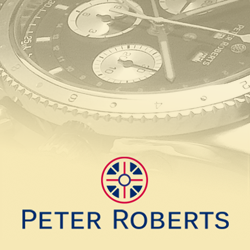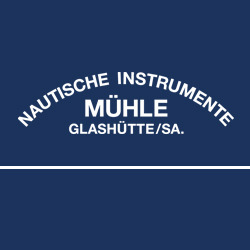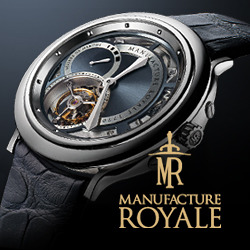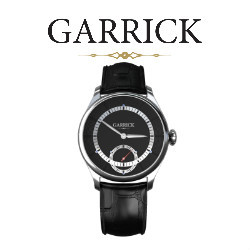Everyone knows about times zones, but still we get caught out: who hasn’t suffered the embarrassment of phoning home, only to learn the hard way that it’s 3am back at the ranch? Watchmakers have been dealing with this for decades, with special wristwatches capable of telling the time in two or more time-zones.
A number of crafty solutions have emerged over the years. Rolex fitted a second hour hand to create the watch they call the GMT (after ‘Greenwich Mean Time’), this extra hand able to be set quickly and independently of the main hand. It’s up to the user to choose which indicates home and which indicates the present location, but the method has been emulated by a number of brands – some even borrowing the name.
Patek Philippe’s range currently boasts a classic dress watch with an extra hand for a second time zone, but the company is also known for a classic timepiece from the 1940s, with the names of a major city from each time zone engraved into the watch bezel. It told you at a glance the time in all of the 24 zones, some models even indicating day or night.
Modern dual time-zone watches tell you more than the hours and minutes, many of them combining other functions (or ‘complications’) including moonphase, chronograph operation and even tourbillon movements. Best of all, they can be re-set to the time of your destination with the flick of a button or twist of the winder, without affecting the minute hand.
While the less-adventurous would argue, with some validity, that it’s just as easy to carry two watches, the inveterate traveller knows one fact above all others, and it’s an increasingly important consideration as air travel grows more inconvenient and restrictive: less is more. A dual time-zone watch marks out that traveller as one who’s taken that advice to heart. And wrist.
ARNOLD & SON TRIPLE TIME-ZONE TOURBILLON GMT
Reviving a name as important as that of pioneering British watchmaker John Arnold meant attaching it to a watch worthy of the honour. It’s enough that the Triple Time-Zone Tourbillon GMT can tell the wearer at a glance the time in three separate zones. The main hands can be set for local time or home, while two smaller dials at the 10 o’clock and 2 o’clock positions provide 24-hour dials capable of being set independently with the press of a button.
But the British Masters, the company behind the revival of Arnold, as well as Tompion and Graham, also fitted the watch with the most coveted of complications: a tourbillon movement. This presents the ‘heart’ of the watch it its own rotating ‘cage’, visible through the dial. Its independent movement allows the watch to run as if independent of gravity, a feature necessary when pocket watches were the norm, and were less likely to enjoy the continual re-positioning of a watch worn on the wrist. The Arnold Triple Time-Zone Tourbillon GMT will be enjoyed by the few, as the company will only produce 25 in gold, 10 each in platinum and white gold, and two special skeleton designs – five in red gold and fine in platinum.
FORTIS GMT SPACEMATIC
Founded in 1912, Fortis has numerous innovations to its name, including the manufacture of the Harwood – the world’s first commercially-viable automatic wristwatch. The company has spent the past three decades carving out a niche as a manufacturer of fine pilot’s watches, notable for their legibility, functionality and value for money. It’s paid off with the company becoming the ‘Official watch supplier for missions and on board the International Space Station ISS.’ While your travels are unlikely to take you to the stratosphere, there are worse ways to chart the changes in longitude than with Fortis’ GMT Spacematic.
With its white-numerals-on-black-dial, large white hands, red second-hand and red-tipped indicator hand for a second time-zone, the GMT shares the same high legibility that makes the range so popular with professionals – it’s a real boon after an 11-hour flight or when you’re suffering jet-lag. The GMT has both a 12-hour dial and outer 24-hour dial, with a date indicator at the 3 o’clock position. A large steel case and robust bracelet complete the package.
GIRARD-PERREGAUX ww.tc
One of the very few brands to make all of their own movements, Girard-Perregaux is known for superior chronographs and tourbillons, and for producing watches officially sanctioned by Ferrari. That’s due in no small part to the company’s president, Gino Macaluso, who was a champion rally driver in the 1970s. His passion for things automotive ensure that the quality and functionality of Girard-Perregaux watches are second-to-none. Under his guidance, the company was one of the first to combine an automatic chronograph with a world-timer, in the 43mm diameter ww.tc.
Launched in 2000, the ww.tc was an instant hit, starting with a yellow gold model with brown and white dial. The series has been expanded in 2003 to include the model shown here, with white gold case, black dial, and a red-and-blue rotating ring that shows the second time zone and whether it’s day or night in the other location. The outer ring shows 24 cities, while a small window at the 2 o’clock position shows the date. Despite its suitability as a sporting timepiece, the ww.tc is elegant enough for formal wear.
ORIS ARTELIER COMPLICATION
Oris’ new ‘Artelier’ range is punningly named after the traditional word for a watchmaker’s facility – an atelier – with the ‘r’ inserted to denote artistry. And the company isn’t taking liberties, for the Artelier Complication is a little masterpiece: not only is it a world traveller, with its second time-zone coverage courtesy of a small 24-hour dial at the 6 o’clock position, it’s a full calendar watch with moonphase.
Measuring 40.5mm in diameter, the Complication manages to squeeze into its guilloche-stamped dial a sub-dial for the days of the week and the day of the month, with the aforementioned moonphase at the 12 o’clock position. All of the adjustments are made easily through an array of tiny push buttons on the sides of the stainless steel case. The dots on the dial and the hands feature Superluminova inlays for legibility in the dark, the glass is treated with an anti-reflection coating and the case profile is slightly curved for greater comfort. Oris finishes the presentation with a choice of steel bracelet or calfskin strap stamped with Lousiana crocodile grain.
PANERAI LUMINOR GMT
Part of the company’s ‘smaller’ range, at ‘only’ 40mm in diameter, the Luminor GMT shares all of the qualities bar size with its 44mm bigger brothers. Panerai is one of THE success stories in the world of quality wristwatches, the company spearheading the trend toward larger timepieces. But the Panerai also boasts a pedigree second to none: the designs are based on the watches supplied to the Italian Navy’s crack diving teams during WWII. With their huge cases, distinctive locking system over the winder and large numerals, Panerais are not only distinctive: their popularity means that they’re one of the most favoured subjects for the villains producing counterfeit watches.
For the traveller, the Luminor GMT provides all of the ruggedness, the water resistance and the legibility, with a large seconds hand at the 9 o’clock position and a window at the 3 o’clock position for the date. A second time zone is indicated, with a 24-hour dial around the watch’s circumference, via a third hand, tipped with a red arrow. Panerai supplies the 40mm watches with either a leather strap, a rubber strap for divers, or a handsome steel bracelet.
UNIVERSAL GENEVE AERO TRI-COMPAX
Along with Heuer, Breitling, and Eberhard, Universal Geneve rates as one of the great names in chronograph design. With ‘retro’ motivating so many of the great watch houses, the company has turned to its past to revive the traditions that have made its watches so collectible. Seriously functional, like a Swiss Army knife, yet elegant and stylish, Universal Geneve’s latest combines features from a brace of the brand’s classic chronographs, the Tri-Compax and the Aero-Compax, to produce the Aero Tri-Compax. An ‘Officially Certified Chronometer’ – meaning that it has been subjected to rigorous testing – the Aero Tri-Compax will be offered in a limited edition, with only 100 examples of each style of dial being produced.
It’s a chronograph collector’s treat, the Aero Tri-Compax featuring every function that a traveller, especially one with sporting interests, might need; you can imagine its usefulness at a Grand Prix or the Olympics, or any event where precision timing is a requirement. Universal Geneve has endowed the Aero Tri-Compax with World Time capability and a 24-hour counter, both 12 hour and 30 minute chronograph functions, moon phase, indication of Day, Date and Month, a sapphire crystal movement window and rotating inner bezel bearing the names of 25 cities. Additionally, it is water resistant to 100 metres.
(Classic Travel, 2003)











